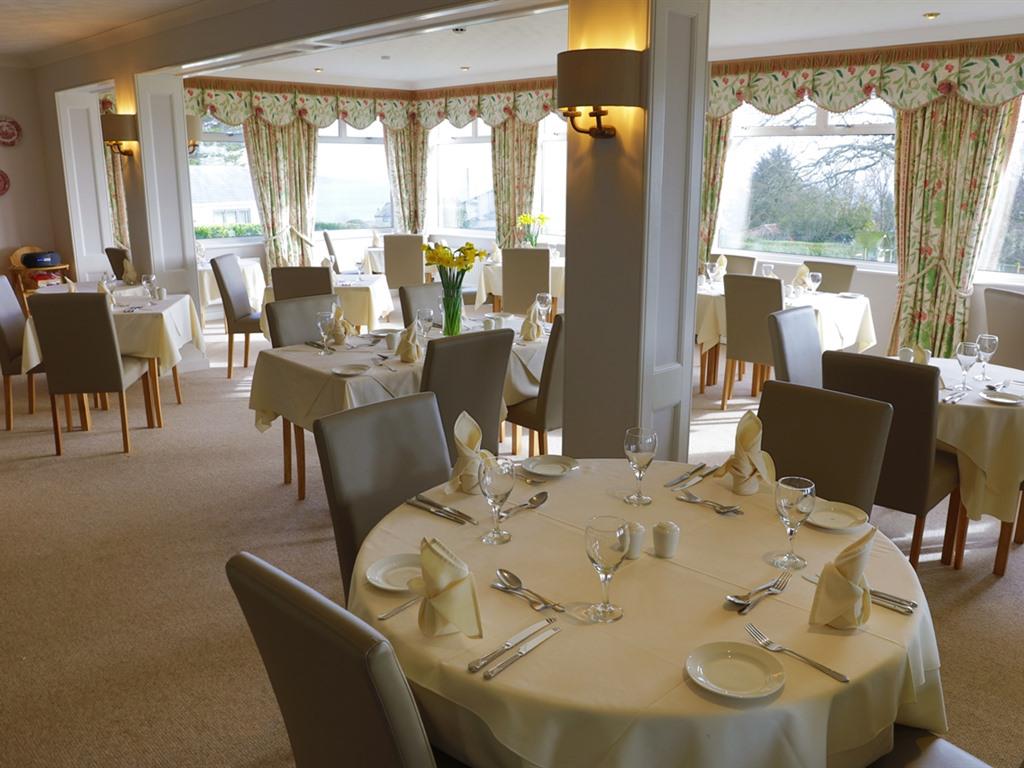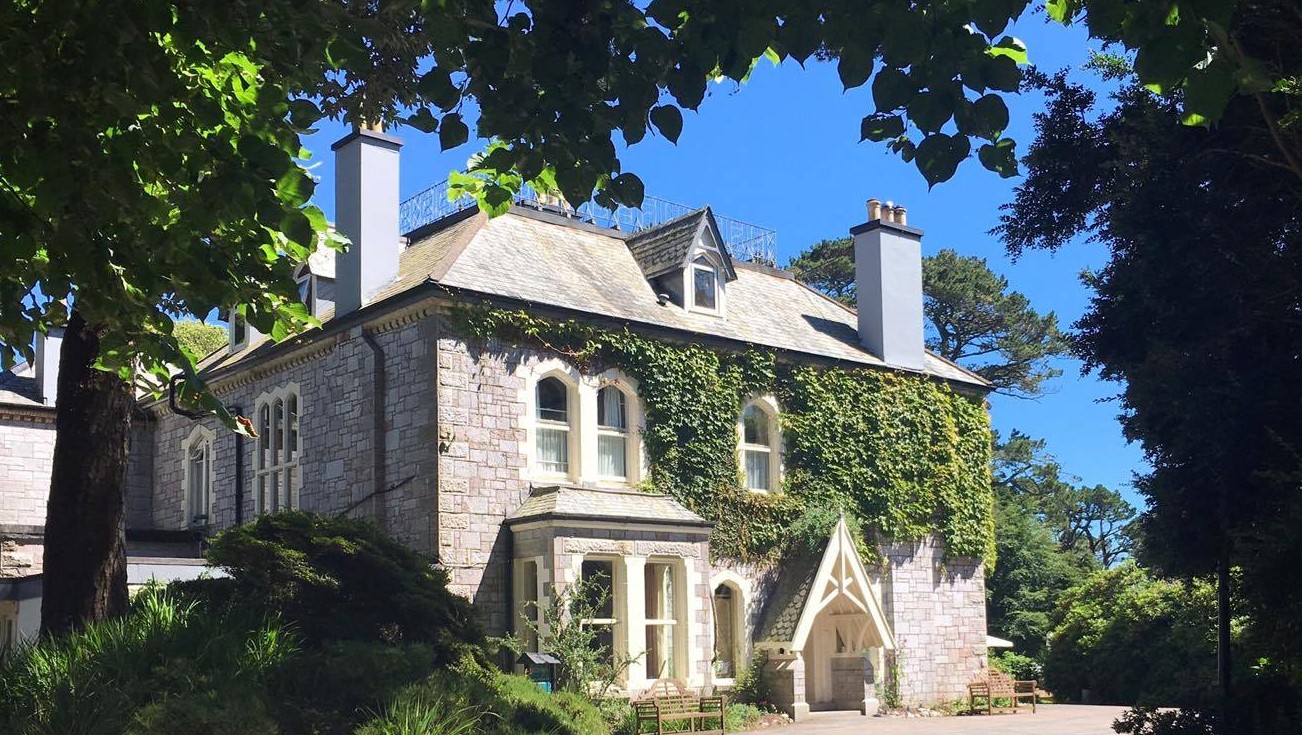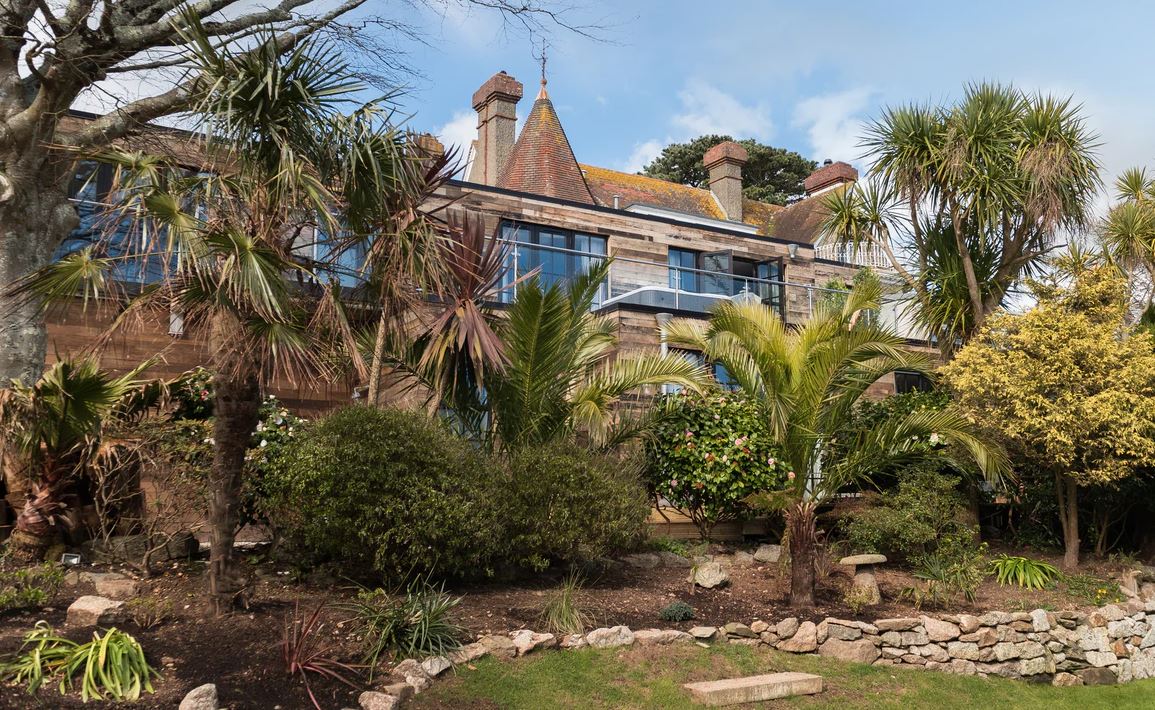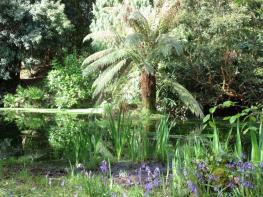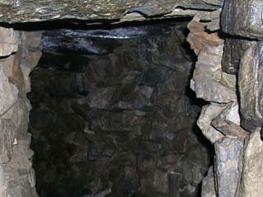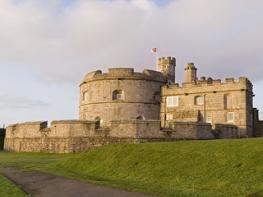Gallen-Treath Guest House has super views over the countryside and sea from its elevated…
Porthoustock to St Keverne

4 miles (6.4kms)
About the walk
The heart has been torn out of the Cornish coast below the attractive village of St Keverne, at the great quarries of Porthoustock and Dean Point, but the contrast between this oddly compelling landscape and the green fields and woods around St Keverne makes for a fascinating walking experience. There has been an honourable trade in quarrying here for many years. Porthoustock Quarry lies on the south side of Porthoustock Cove and is a working quarry. Dean Quarry is currently mothballed, but there are plans to re-open it. Part of this walk follows the coastal footpath around Dean Quarries.
Dramatic history
The sea along this section of the Cornish coast has a dramatic and often grim history. About a mile southeast of Porthoustock Cove lies the Manacles, a dangerous area of partially submerged rocks that lurk just under a mile (1.6km) offshore from Godrevy Beach. The Manacles rocks can be clearly seen at low tide from the part of the walk that descends to Godrevy Beach. Scores of vessels were wrecked on this notorious reef, especially during the days of sail. Many hundreds of lives were lost in harrowing circumstances – although there is a noble record of lifesaving by local people. The name Manacles is a corruption of the Cornish Maen Eglos, which translates rather menacingly as the ‘Church Stone’. Today the area round the Manacles is one of the most popular diving spots in the country, and dive boats launch regularly from Porthoustock beach.
Smuggling and politics
The maritime history of the St Keverne area included formidable smuggling activity until well into the 19th century. In 1762, at Porthoustock, 218 barrels of brandy were landed in one night. There were few qualms about sharing the spoils, and St Keverne’s Three Tuns Inn is said to have been named after three kegs of smuggled brandy that were found by excise men in 1467, in the possession of the local vicar. Dramatic politics also played a part in the history of the area during the 1497 Cornish Rebellion against the raising of taxes by Henry VII to fund a war against Scotland. A St Keverne blacksmith, Michael Joseph, known as An Gof (the blacksmith), was a prominent leader of the rebellion. The rebel force reached as far as southeast London, where they were defeated by Henry’s army. Michael An Gof, together with his co-leader Thomas Flamank, were hung, drawn and quartered as traitors, but are hailed to this day as true Cornish heroes. A handsome statue of An Gof and Flamank was unveiled in St Keverne in 1997 on the 500th anniversary of the rebellion.
Walk directions
Turn left on leaving Porthoustock Beach car park and follow the road steeply uphill. Turn left at the first junction. In another steep 55yds (50m), go right and over a stile, then bear left across three fields to reach a lane.
Turn right and reach the little hamlet of Rosenithon, then turn left down a lane by a postbox. Where the lane ends at Chenhale, go left through a kissing gate. Follow a path through fields to reach Godrevy Beach. Dogs should be kept on leads until the beach.
Head for the south end of the beach and follow the coast path uphill to reach three large boulders and a quarry warning notice. Bear left down a broad track towards the sea and follow footpath notices round the edge of Dean Point and its quarries, passing above an old jetty and a small beach. Follow the path downhill to another warning sign and a junction with a path leading inland.
Go right, signed to St Keverne, and follow a very steep path uphill through woods. Continue through a kissing gate until you reach a broad gravel track by houses. Turn right along the track, passing a pleasant picnic area on the way, to where the track bends left and becomes a surfaced road.
In just under 0.5 miles (800m), at a sharp bend, look for a stile on the right. Use this stile to cut across a field and back on to the lane. At the next road junction you can divert left to Roskilly’s Farm, famous for the delicious ice cream it produces. On the main route, keep ahead at the junction for just 0.5 miles (800m) to reach St Keverne and its landmark church.
Go into the churchyard and follow a footpath to the left of the church. Keep straight ahead at a junction with a wall on your right, go through a metal gate then go through a wooden kissing gate. Follow the obvious path along two fields. Cross a lane and then a stile, then keep to the left edge of a field.
Where the field-edge bends left, keep ahead following the contour of the field to reach a wooden stile and a gateway. Keep straight ahead on a path into woodland. Cross a small stream and a stile and then reach some stone steps at a junction. Turn right along a sunken lane.
At a road, turn left uphill, then in 50yds (46m), turn off right. Cross a stream and then go through a dainty metal gate. Follow a path beneath trees to reach a lane by thatched cottages, from where you descend to Porthoustock.
Additional information
Field-edge paths, coastal footpath, steeply stepped path, country lanes, many stiles
Fields, woods and coast
Dogs on lead through grazed areas and as notices indicate
OS Explorer 103 The Lizard
Large area of parking on grass and gravel above beach, donation box
Porthoustock and St Keverne
Porthoustock Quarry is a working quarry, so heed all warning notices as blasting may take place at any time
WALKING IN SAFETY
Read our tips to look after yourself and the environment when following this walk.
Find out more
Also in the area
About the area
Discover Cornwall and Isles of Scilly
Cornwall has just about everything – wild moorland landscapes, glorious river valley scenery, picturesque villages and miles of breathtaking coastline. With more than 80 surfing spots, there are plenty of sporting enthusiasts who also make their way here to enjoy wave-surfing, kite surfing and blokarting.
In recent years, new or restored visitor attractions have attracted even more visitors to the region; the Eden Project is famous for its giant geodesic domes housing exotic plants from different parts of the globe, while nearby the Lost Gardens of Heligan has impressive kitchen gardens and a wildlife hide.
Nearby stays
Restaurants and Pubs
Nearby experiences
Recommended things to do
Why choose Rated Trips?
Your trusted guide to rated places across the UK
The best coverage
Discover more than 15,000 professionally rated places to stay, eat and visit from across the UK and Ireland.
Quality assured
Choose a place to stay safe in the knowledge that it has been expertly assessed by trained assessors.
Plan your next trip
Search by location or the type of place you're visiting to find your next ideal holiday experience.
Travel inspiration
Read our articles, city guides and recommended things to do for inspiration. We're here to help you explore the UK.


